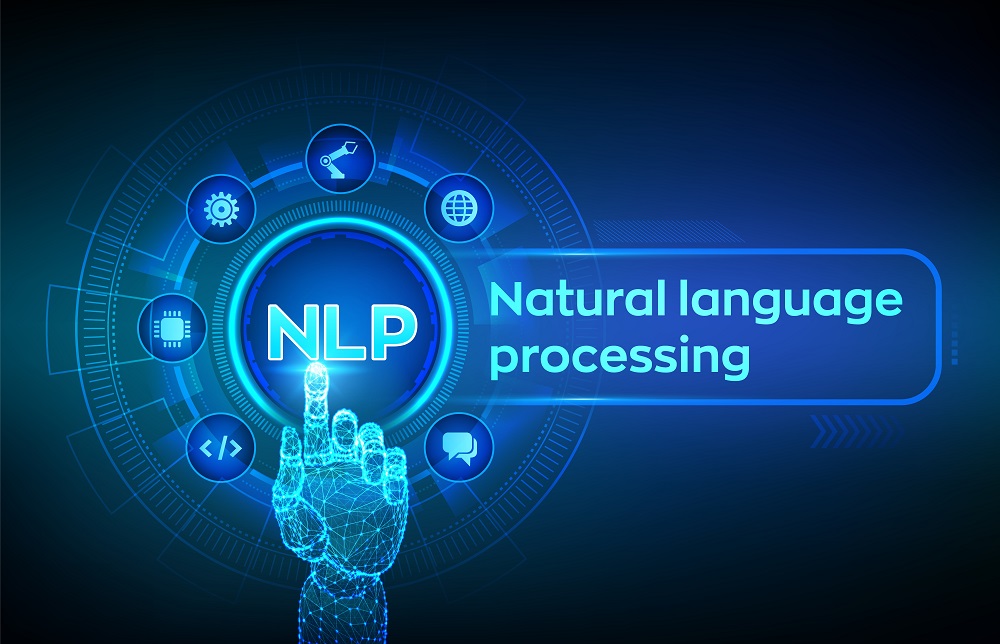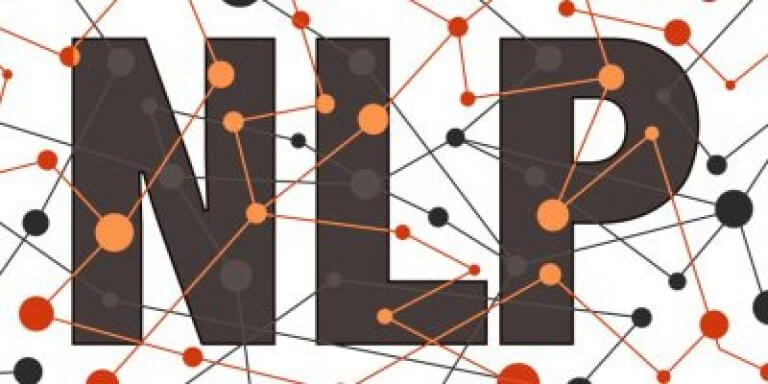Digitization has greatly changed our lives today.
A decade back data was incidental. But the invention of smart devices and social media has made data essential.
A plethora of data is generated continuously and is available in public without any restrictions. As business leaders have begun to understand the importance of data-driven decision making, the spotlight now has turned towards this surplus data that is scattered across various social media platforms.
Harnessing this social media data has become a great challenge today as it is anything but traditional – also, this open-sourced social media data is largely unstructured and is of various formats, styles, and languages from various corners of the world.
Why NLP is the keyword?
Natural Language Processing (NLP) is the progeny of Artificial intelligence that has the ability to read, comprehend and glean meaning from human language.
Social media, in reality, is a platform of emotions. People record their views about various things like their experience with a particular product, thoughts on current affairs, a company’s service, and much more, creating an emotional clutter all over the platform.
The greatest advantage of NLP is that it is language-agnostic, making it the best match to make sense of the clutter on social media.
“NLP reduces the time to read unstructured data by 60-70% and accelerates time-to-market by 3 times with improved scalability and continuity.”
To give you an idea, any product’s performance is assessed based on customer’s reviews and ratings. As for the new media age, customers can share their reviews across any one of the various social media platforms like websites, Twitter, Instagram, Facebook, Youtube, and blogs. Apart from customers, technology geeks also talk about product features on social media platforms.
These reviews contain hidden sentiments of customers. Some may explain to what degree the product met the customer’s expectation, while the others may allude to factors that have caused a gap between the expectation from, and the reality of the product. However, all these reviews available on social media may not be totally dependable. Some of these may be fake, paid or hype reviews.
Getting to the crux of the matter, analyzing behemoth data available on social media is laborious and time-consuming – wherein, today’s fast-paced digital world businesses as well consumers are looking for real-time solutions.
A real-time example is Domino’s Pizza. They leveraged NLP to locate the important 3% of social media conversations that deserve a quick response, intelligently ignoring the 97% of background chatter. Consequently, Domino’s has reduced case handling time by an impressive 53%.
How to leverage NLP in social media mining to identify product feature innovation/engineering opportunities
To illustrate, every brand wants to gather, group, and analyze customer reviews and ratings of a specific product, to comprehend the performance of the product at the earliest to make smart decisions about further manufacturing and distribution of the product.
To achieve this, you can start with an automated web-crawler and ML model to scrape scattered and unstructured social media data (texts/statements) across product review sites, blogs, and app play stores, etc., and stitch them into a single data mart.
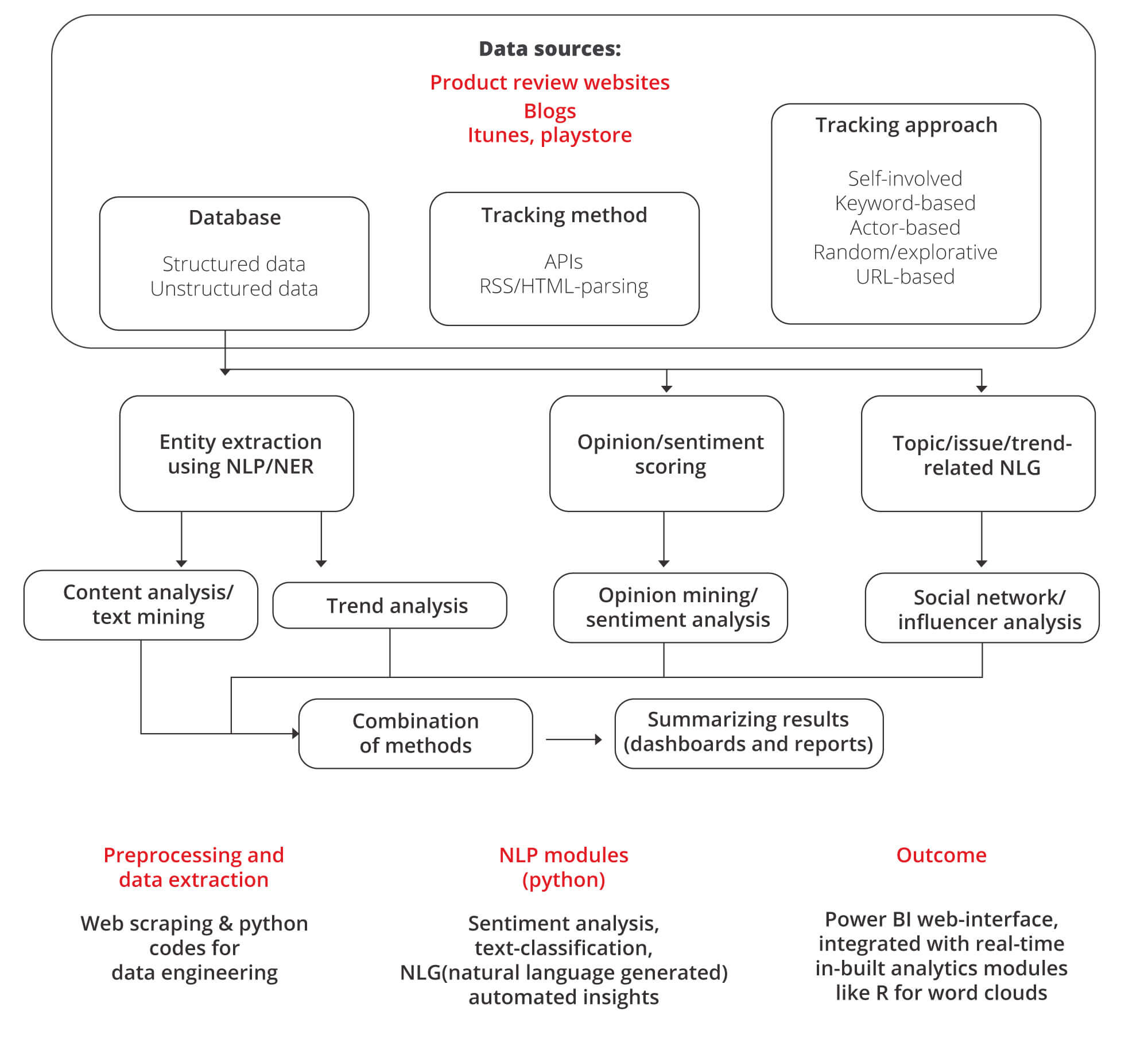
Split the collected texts/statements through tokenization to reckon the sentiment value of each word by comparing it within the sentiment lexicon. Likewise, perform a basic data cleanup and sentence lemmatization to remove stop words, punctuation marks, lower capital cases and redundancy of texts/statements.
After the data cleanup and lemmatization process, perform LDA (Latent Dirichlet Allocation) to identify and segment co-mentions (bi-grams and tri-grams) and represent words that appear together into clusters.
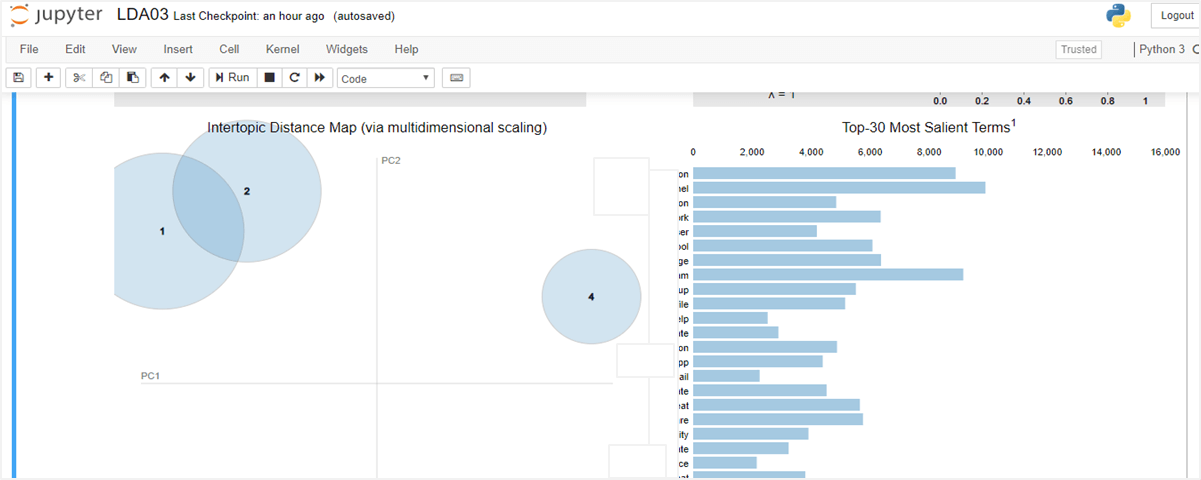
Manually tag words/attributes in similar clusters into product dimensions with the help of an expert team. Tagging these dimensions into the required objective helps create a complete product feature dictionary as a result of automated NLP based text mining.
Further, perform sentiment analysis – a subfield of NLP to craft unstructured text into structured data to identify and extract opinions. Likewise, you can also build a BI powered analytics dashboard to enable self-calculated sentiment scores.
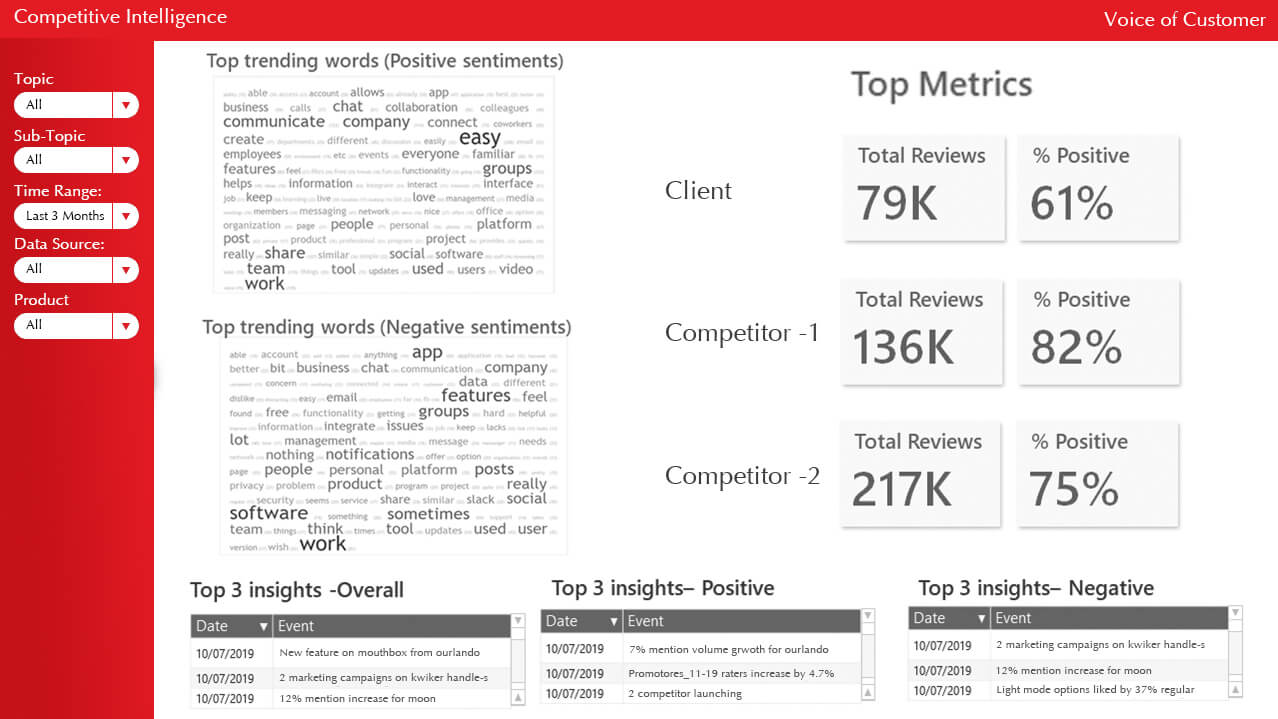
The above result helps product leads get quick updates on campaigns, critical feedback on new product features while performing market acceptance testing. Additionally, this also helps benchmark products with competitors seamlessly.
Besides helping brands to understand their customer’s sentiments to improvise their products, this process can also be leveraged to identify popular products and trends, foresee emerging trends and customer requirements.
Wrapping Up
It can, therefore, be safely said that in the present times, NLP is a game-changer for data analysis, predictive analysis, and behavior analysis across various social media sources to democratize critical insights and enable engineers to go the extra mile to raise the bar of innovation and quality of products thereby, hitting two birds with one stone.


